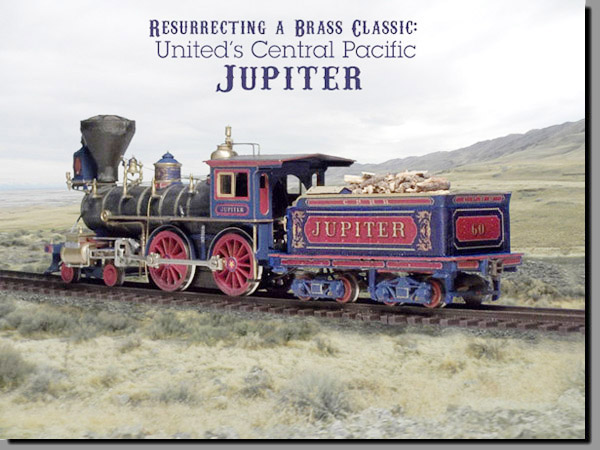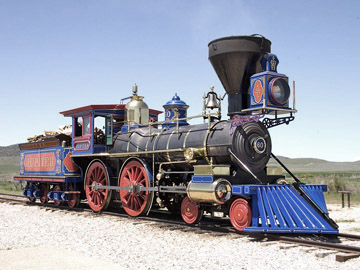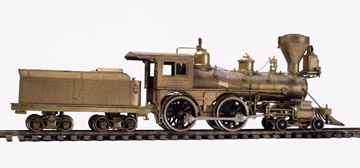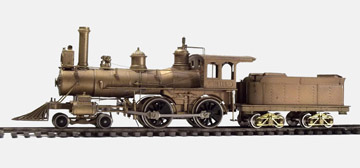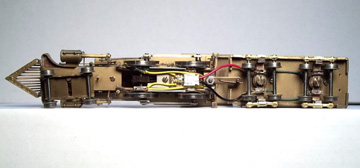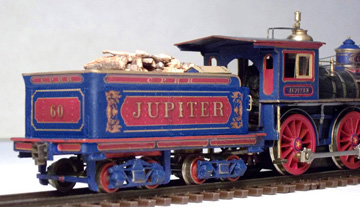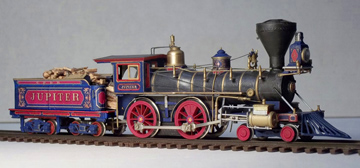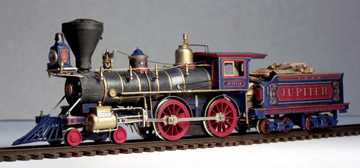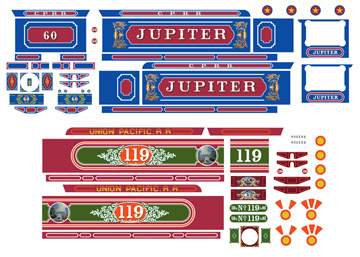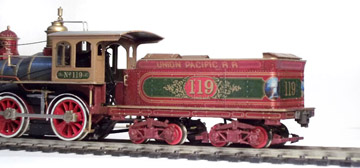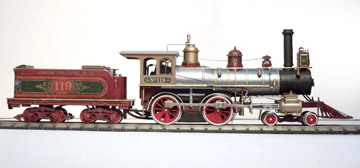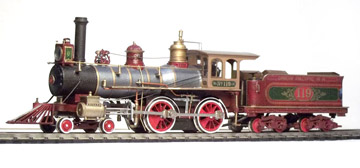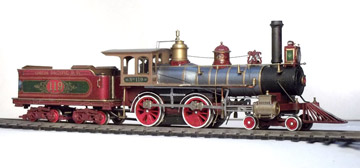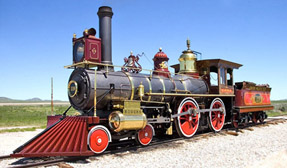Fast-forward. About 44 years and half a dozen model railroad layouts later, my adult daughter gives me a birthday surprise...
The original Jupiter, Central Pacific #60, was built in 1868 by the Schenectady Locomotive Works of New York. It was a typical wood-burning high-drivered dual-use (passenger & freight) 4-4-0, a standard "American" type. The Central Pacific was in its final months of construction, the need was great, and contracts for engines had been sent out to most major locomotive factories in the East. The Jupiter and its three sisters from the same works were boxed up dismantled and sent by sailing ship 'round the Horn to California, where they were assembled and immediately sent to the "Front"— the eastward-building railhead.
Jupiter ended up at the Golden Spike ceremony as a last-minute replacement for another engine that encountered a minor obstacle (a log) left on the track by some chagrined workers. At the ceremony, Jupiter shared the spotlight with the UP's 119, was featured in the famous Andrew Russell photographs, and so became an icon of American railroading.
It's hard to believe, but over the years the original measurements and erection drawings of the locomotives were lost. The engines themselves were scrapped. By the time the centennial rolled around, all any historian or model builder had to go on was the black and white photographs taken at the time of the ceremony. When the United models were made, there was still some uncertainty about the locomotive's appearance. Balboa produced a brass set too, differing in dimensions and detail. As for paint and colors— that was anybody's guess.
In recent years, new research by indefagitable historians Jim Wilke and Jon Davis has come up with the closest approximation to the original color shemes yet. I used their notes and Jon Davis' renderings for guidance in creating my own decals. The renderings can be currently found here.
After remotoring and fine-tuning the loco, I painted it using Floquil paints airbrushed on. The Russia-iron boiler jacket got several coats of gloss varnish. Because I couldn't print gold leaf with a laserprinter, I decided to print the decals on transparent decal stock, leaving the gold lettering and filigree blank so that the shined-up brass underneath would show through. It works. The gilt lettering gleams.
Click on any picture for an enlargement.
